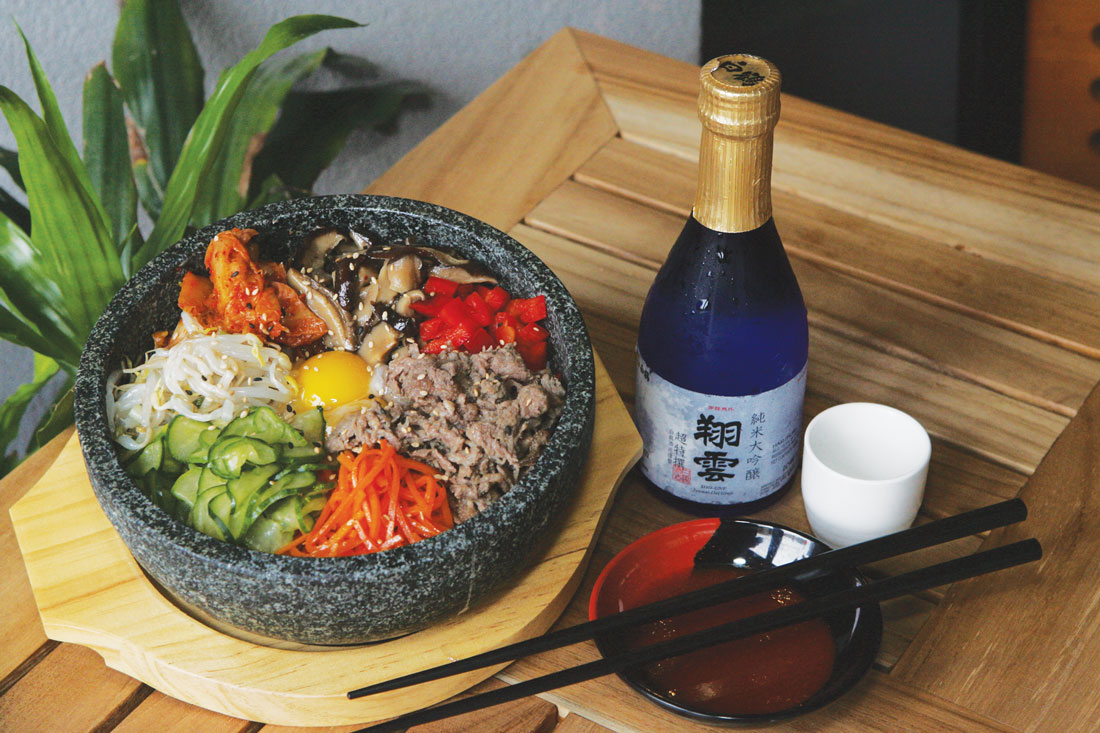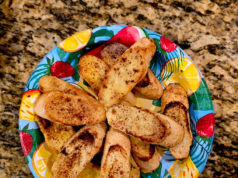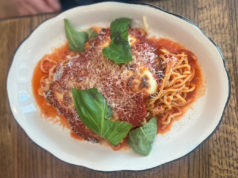HoYA Korean Kitchen sits in the Sundance Square space that once housed a chain shop where hurried diners could customize their subs with veggies and condiments. A similar concept applies to Korean food.
HoYA’s menu mostly revolves around simple plates or bowls featuring a mix-and-match selection of proteins, starches, veggies, and sauces. The grab-and-go idea is novel in an area of town that’s heavy on sit-down restaurants. If you have some time, the restaurant’s newly enclosed back patio is quiet and comfortable.
The starter of tempura shrimp and veggies was not necessarily authentic but still pleasant. The fluffy, crispy batter was pretty tasty. The zucchini slice and onion ring were a little al dente under their coat of yummy fried goodness, but the five meaty shrimp were perfectly cooked.
Inexpensive entrée bowls can be ordered with a base of white rice, potato noodles, or wheat udon noodles. HoYA was out of the wheat noodles on our visit, so we went with the potato noodles, which were glass-like and just a little thicker than vermicelli. The soft, slightly chewy strands had a subtle smoky taste courtesy of the sesame oil covering them.
We ordered them with two bowls. The first was with beef bulgogi, the Korean version of barbecue. Unlike Texas ’cue, though, the bulgogi meat is sliced and then spiced and grilled. The soy sauce coating the beef and noodles was mild and slightly sweet.
The other bowl was with spicy pork in a chili-soy coating that packed a moderately zesty kick. Along with the sauce in which the protein is cooked, HoYA offers an array of dipping sauces, including traditional soy, doenjang (like Korean miso), teriyaki, and the deliciously powerful gochujang, a sweetly spicy chile-based delicacy that’s a little like sriracha. The staffers were great at describing the sauces and telling us which ones worked best with which proteins. The doenjang was reminiscent of your standard table soy, but the gochujang was rave-worthy. The red chile sauce tasted fabulous with everything, and although it was spicy, the heat didn’t last.
Your entrée bowl comes with a side of barely steamed veggies (broccoli and carrots on the day we visited) and a small scoop of kimchi, the traditional condiment of cabbage, onion, red pepper, and garlic. HoYA’s version of the Korean mainstay wasn’t fully fermented, which is probably fine –– fully fermented kimchi is an acquired taste at best, even for an adventurous foodie, because the vinegar flavor gets stronger the longer the veggies sit. Fully fermented or not, HoYA’s kimchi was crunchy, pungent, garlicky, and definitely hotter than even the gochujang sauce.
The dosirak box includes two proteins with your choice of noodle or rice and sauce, along with a salad and a soup. The spicy chicken soup was mostly broth with a little bit of bird, and the salad was a sad-looking pile of lettuce with some shredded beets and olives on top. But no matter. The rest of the box was plenty good, with generous servings of perfectly cubed fried tofu and what was meant to be spicy chicken –– it was fairly mild. The fowl and soy paired well with the gochujang sauce or bites of kimchi.
The staff at HoYA plainly has great love for and enthusiasm about Korean food. Some of the menu items may be modified to appease the palates of people in Fort Worth. Additionally, some of the recipes are being adjusted, since the place has been in soft-opening mode for about a month. Even if you’re on the fence about Korean food, HoYA is a friendly, inexpensive, and tasty way to experiment with the cuisine.
[box_info]
HoYA Korean Kitchen
355 W 3rd St, FW. 817-334-7999. 11am-9pm daily. All major credit cards are accepted.
HoYA Korean Kitchen
Dosirak box $10
Noodle bowl $7
Tempura shrimp and veggies $8
[/box_info]












